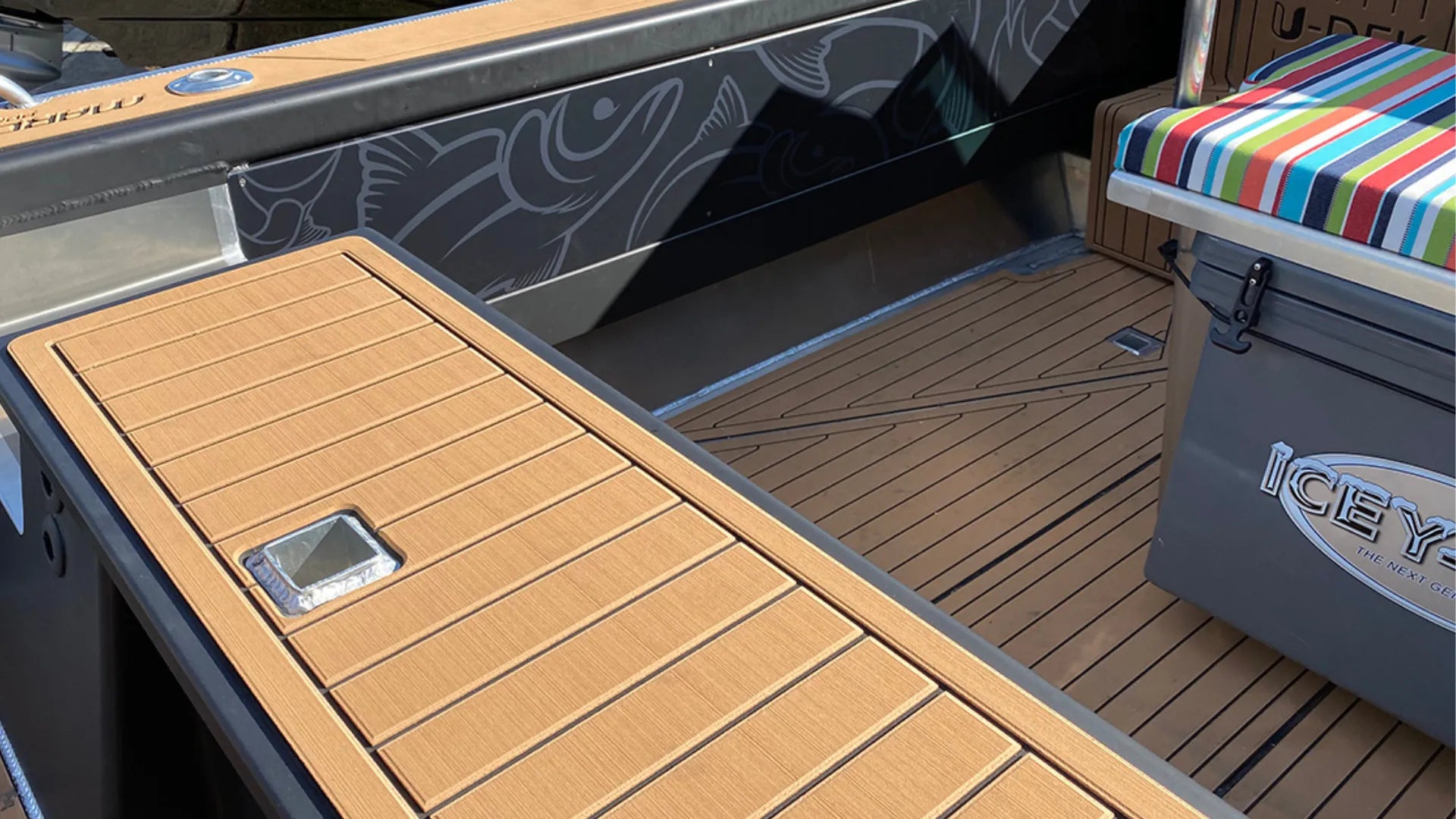When it comes to boat decking materials, two of the most popular choices are EVA foam boat flooring and traditional teak decking. Both have their strengths, but they serve very different needs. This guide compares the pros and cons of EVA foam vs teak so you can make the best decision for your vessel.
The Real Teak Decking
Pros of Teak:
-
Unmatched Aesthetics: A well-maintained teak deck offers a warm golden-brown hue that exudes luxury and tradition. It also enhances a boat’s resale value.
-
Natural Performance: Teak’s high oil and silica content make it naturally resistant to rot, splintering, and moisture. It also provides a natural non-slip boat flooring surface when wet.
-
Longevity: Professionally installed teak decks can last decades, even in harsh marine environments.
Cons of Teak:
-
High Cost & Weight: Teak is one of the most expensive marine flooring options. The material is heavy and installation requires skilled labor.
-
Demanding Maintenance: Teak needs frequent scrubbing and annual applications of teak oil or sealant. Without maintenance, it turns silver-gray and may mildew.
-
Environmental Concerns: Teak harvesting raises deforestation issues unless sourced from certified sustainable plantations.
EVA Foam Boat Flooring
EVA foam marine flooring has revolutionized modern boat decking with its comfort, safety, and affordability. It is installed as adhesive-backed sheets or tiles and can even mimic teak with faux-teak EVA designs.
Pros of EVA Foam:
-
Superior Comfort & Safety: EVA foam provides cushioning that reduces fatigue during long hours onboard. Its non-slip EVA mats ensure excellent traction when wet, making it ideal for family boats and fishing vessels.
-
Low Maintenance: No sanding, oiling, or chemicals needed. A rinse with soap and water is enough to keep EVA foam looking new.
-
Cost-Effective & Customizable: EVA foam is far cheaper than teak in both material and installation. It comes in a wide variety of colors, textures, and custom laser-cut patterns, including teak-look finishes.
Cons of EVA Foam:
-
Durability vs Sharp Objects: EVA is tough but can be punctured by knives or fish hooks.
-
Repair Challenges: Unlike teak, which can be spot-repaired, damaged EVA sections may require replacing a larger panel to maintain consistent color.
-
Perception: In high-end yacht markets, EVA may not carry the same prestige as genuine teak.
Final Choice: EVA vs Teak
Your decision depends on your boating priorities:
-
Choose teak if you value timeless elegance, maximum resale value, and don’t mind the high cost and maintenance.
-
Choose EVA foam boat flooring if you want modern comfort, non-slip safety, easy upkeep, and affordable customization.
For most recreational boaters, EVA foam marine decking offers the best balance of performance, cost, and convenience. Teak remains an option for purists who value tradition over practicality.
FAQs: EVA Foam vs Teak
1. Is EVA foam safer than teak?
Yes. EVA foam is softer and provides better traction when wet, reducing slip hazards.
2. Which lasts longer: EVA foam or teak?
Teak can last decades with heavy maintenance. EVA foam typically lasts 5–10 years with minimal upkeep.
3. Does EVA foam get hot in the sun?
No. EVA foam has insulating properties that keep it cooler than teak or fiberglass.
4. Can EVA foam look like teak?
Yes. Faux-teak EVA flooring kits replicate the look of traditional teak with lower cost and easier care.
5. Which is more eco-friendly: EVA or teak?
EVA foam is recyclable and requires no chemical treatments. Teak raises sustainability concerns unless FSC-certified.

Share:
Step-by-Step Installation Guide for EVA Boat Flooring
5 Key Factors When Choosing an OEM EVA Boat Flooring Supplier